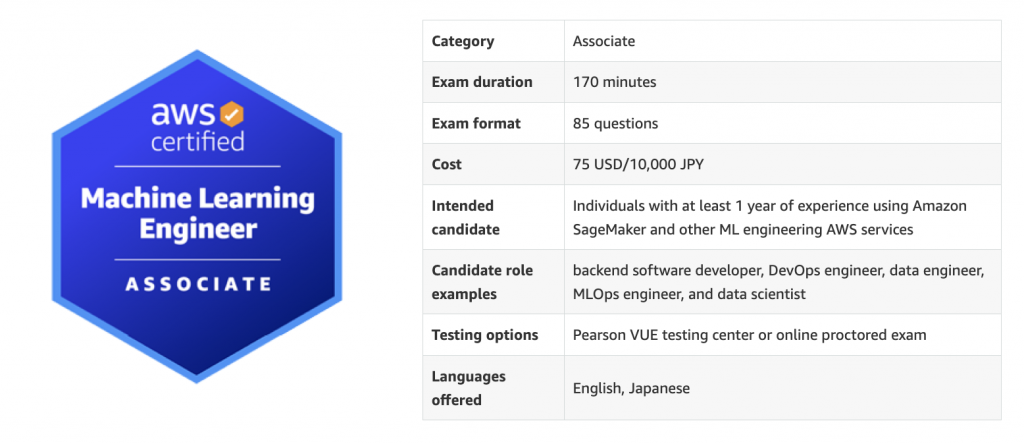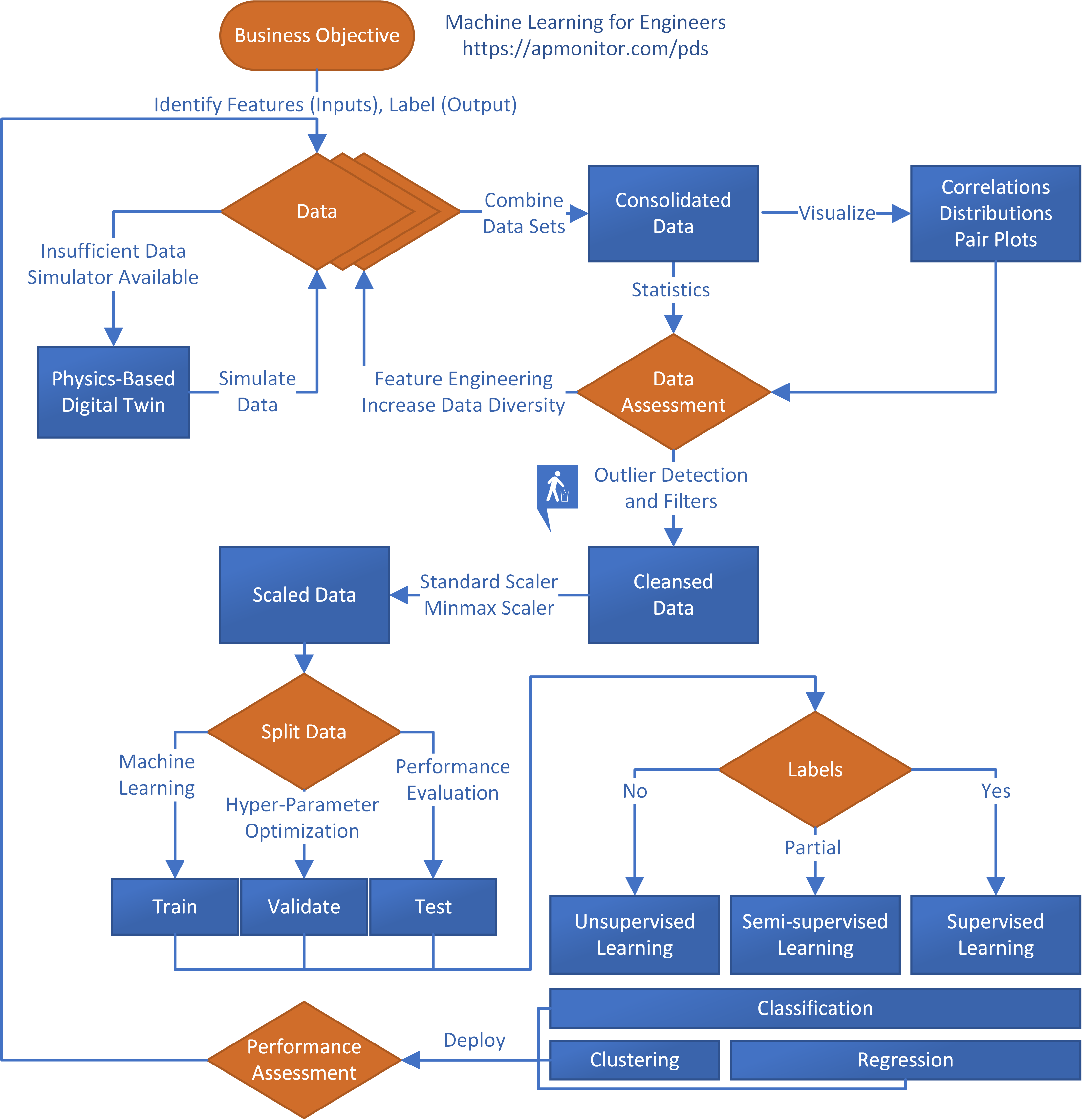All Categories
Featured
Table of Contents
- – The 4-Minute Rule for 5 Best + Free Machine Le...
- – 10 Simple Techniques For Computational Machine...
- – The Main Principles Of What Is The Best Route...
- – The smart Trick of Machine Learning & Ai Cour...
- – Indicators on Machine Learning Engineer Vs S...
- – Training For Ai Engineers Fundamentals Expla...
- – How I Went From Software Development To Mach...
Some individuals believe that that's dishonesty. If somebody else did it, I'm going to use what that person did. I'm compeling myself to assume through the feasible remedies.
Dig a little bit deeper in the math at the beginning, simply so I can build that structure. Santiago: Lastly, lesson number 7. I do not think that you have to understand the nuts and screws of every algorithm prior to you use it.
I would certainly have to go and inspect back to in fact obtain a better instinct. That does not indicate that I can not address points using neural networks? It goes back to our sorting example I assume that's simply bullshit guidance.
As an engineer, I have actually worked on numerous, numerous systems and I've used several, lots of things that I do not understand the nuts and bolts of just how it works, although I understand the influence that they have. That's the final lesson on that string. Alexey: The amusing point is when I assume regarding all these libraries like Scikit-Learn the algorithms they make use of inside to carry out, as an example, logistic regression or another thing, are not the very same as the formulas we study in artificial intelligence classes.
The 4-Minute Rule for 5 Best + Free Machine Learning Engineering Courses [Mit
Even if we attempted to discover to get all these basics of machine learning, at the end, the algorithms that these collections use are different. Santiago: Yeah, definitely. I believe we require a great deal much more materialism in the industry.

By the method, there are 2 various paths. I usually talk with those that wish to operate in the market that wish to have their influence there. There is a path for scientists and that is completely various. I do not risk to speak regarding that because I do not know.
Right there outside, in the industry, materialism goes a lengthy way for sure. Santiago: There you go, yeah. Alexey: It is an excellent motivational speech.
10 Simple Techniques For Computational Machine Learning For Scientists & Engineers
One of the points I desired to ask you. First, allow's cover a pair of points. Alexey: Let's start with core devices and structures that you need to discover to really shift.
I know Java. I know SQL. I understand just how to utilize Git. I recognize Celebration. Maybe I recognize Docker. All these points. And I find out about artificial intelligence, it looks like an amazing point. So, what are the core tools and structures? Yes, I saw this video clip and I get convinced that I do not need to obtain deep into mathematics.
What are the core tools and frameworks that I need to discover to do this? (33:10) Santiago: Yeah, definitely. Great inquiry. I think, primary, you should begin discovering a little bit of Python. Because you already know Java, I do not assume it's going to be a big change for you.
Not because Python is the same as Java, but in a week, you're gon na obtain a lot of the distinctions there. You're gon na be able to make some development. That's number one. (33:47) Santiago: Then you obtain particular core tools that are going to be used throughout your whole occupation.
The Main Principles Of What Is The Best Route Of Becoming An Ai Engineer?
That's a collection on Pandas for information control. And Matplotlib and Seaborn and Plotly. Those 3, or one of those 3, for charting and presenting graphics. Then you get SciKit Learn for the collection of equipment knowing formulas. Those are tools that you're going to need to be utilizing. I do not recommend just going and finding out about them unexpectedly.
We can talk about particular programs later. Take one of those courses that are mosting likely to start introducing you to some issues and to some core ideas of equipment learning. Santiago: There is a training course in Kaggle which is an intro. I do not keep in mind the name, however if you most likely to Kaggle, they have tutorials there for totally free.
What's great concerning it is that the only requirement for you is to understand Python. They're going to present a problem and tell you how to make use of choice trees to fix that details problem. I believe that procedure is extremely effective, since you go from no machine finding out background, to recognizing what the trouble is and why you can not address it with what you recognize now, which is straight software engineering techniques.
The smart Trick of Machine Learning & Ai Courses - Google Cloud Training That Nobody is Discussing
On the various other hand, ML engineers concentrate on structure and deploying device knowing models. They concentrate on training designs with data to make forecasts or automate jobs. While there is overlap, AI designers take care of even more diverse AI applications, while ML designers have a narrower concentrate on maker learning formulas and their practical implementation.

Artificial intelligence engineers concentrate on developing and deploying equipment discovering models into manufacturing systems. They service engineering, guaranteeing designs are scalable, reliable, and incorporated into applications. On the various other hand, information researchers have a more comprehensive duty that includes information collection, cleaning, exploration, and structure versions. They are frequently in charge of drawing out understandings and making data-driven decisions.
As companies increasingly take on AI and machine knowing modern technologies, the demand for experienced professionals expands. Equipment understanding designers work on advanced jobs, add to development, and have competitive salaries.
ML is basically different from typical software program growth as it focuses on teaching computers to learn from information, instead of programming explicit guidelines that are executed systematically. Unpredictability of end results: You are probably used to creating code with foreseeable outcomes, whether your feature runs when or a thousand times. In ML, however, the end results are much less certain.

Pre-training and fine-tuning: Just how these versions are educated on huge datasets and after that fine-tuned for particular tasks. Applications of LLMs: Such as message generation, belief evaluation and information search and access. Documents like "Focus is All You Required" by Vaswani et al., which presented transformers. Online tutorials and programs concentrating on NLP and transformers, such as the Hugging Face program on transformers.
Indicators on Machine Learning Engineer Vs Software Engineer You Should Know
The capability to handle codebases, merge adjustments, and deal with disputes is equally as vital in ML development as it remains in typical software tasks. The skills created in debugging and testing software application applications are highly transferable. While the context could alter from debugging application logic to recognizing issues in data processing or version training the underlying principles of methodical examination, theory testing, and iterative improvement coincide.
Equipment knowing, at its core, is heavily reliant on data and possibility theory. These are essential for understanding just how formulas discover from information, make predictions, and examine their efficiency. You need to take into consideration coming to be comfortable with concepts like analytical value, circulations, hypothesis screening, and Bayesian reasoning in order to design and analyze designs successfully.
For those thinking about LLMs, a thorough understanding of deep learning styles is advantageous. This includes not only the auto mechanics of neural networks but also the style of particular versions for different use instances, like CNNs (Convolutional Neural Networks) for picture handling and RNNs (Reoccurring Neural Networks) and transformers for sequential information and natural language handling.
You must be aware of these concerns and learn strategies for determining, alleviating, and interacting concerning predisposition in ML versions. This includes the possible influence of automated decisions and the moral ramifications. Many versions, specifically LLMs, call for considerable computational resources that are typically supplied by cloud platforms like AWS, Google Cloud, and Azure.
Structure these skills will certainly not just help with a successful change into ML however likewise make sure that programmers can contribute efficiently and sensibly to the improvement of this dynamic area. Theory is crucial, however absolutely nothing beats hands-on experience. Start servicing tasks that allow you to apply what you've found out in a useful context.
Take part in competitors: Join systems like Kaggle to get involved in NLP competitions. Develop your tasks: Beginning with simple applications, such as a chatbot or a message summarization device, and gradually raise complexity. The area of ML and LLMs is quickly evolving, with new advancements and modern technologies arising regularly. Remaining upgraded with the most up to date study and patterns is important.
Training For Ai Engineers Fundamentals Explained
Join areas and discussion forums, such as Reddit's r/MachineLearning or area Slack networks, to review concepts and obtain guidance. Go to workshops, meetups, and conferences to attach with various other specialists in the field. Add to open-source tasks or compose article about your learning trip and projects. As you obtain competence, start searching for chances to incorporate ML and LLMs into your work, or look for new duties focused on these innovations.

Potential usage situations in interactive software, such as referral systems and automated decision-making. Understanding uncertainty, basic analytical steps, and chance circulations. Vectors, matrices, and their duty in ML algorithms. Error reduction techniques and gradient descent explained merely. Terms like design, dataset, features, labels, training, inference, and recognition. Data collection, preprocessing strategies, version training, examination processes, and implementation considerations.
Decision Trees and Random Woodlands: User-friendly and interpretable versions. Matching trouble types with proper designs. Feedforward Networks, Convolutional Neural Networks (CNNs), Recurring Neural Networks (RNNs).
Data circulation, makeover, and feature design strategies. Scalability principles and performance optimization. API-driven approaches and microservices integration. Latency management, scalability, and version control. Continual Integration/Continuous Implementation (CI/CD) for ML operations. Model tracking, versioning, and efficiency monitoring. Finding and dealing with adjustments in model performance with time. Attending to efficiency bottlenecks and resource management.
How I Went From Software Development To Machine ... - Truths

Training course OverviewMachine understanding is the future for the next generation of software program specialists. This training course functions as an overview to artificial intelligence for software engineers. You'll be introduced to three of one of the most appropriate parts of the AI/ML technique; overseen knowing, semantic networks, and deep understanding. You'll grasp the differences between conventional programs and equipment discovering by hands-on growth in supervised learning before developing out intricate dispersed applications with semantic networks.
This training course acts as a guide to equipment lear ... Show More.
Table of Contents
- – The 4-Minute Rule for 5 Best + Free Machine Le...
- – 10 Simple Techniques For Computational Machine...
- – The Main Principles Of What Is The Best Route...
- – The smart Trick of Machine Learning & Ai Cour...
- – Indicators on Machine Learning Engineer Vs S...
- – Training For Ai Engineers Fundamentals Expla...
- – How I Went From Software Development To Mach...
Latest Posts
Sql Interview Questions Every Data Engineer Should Know
Mastering The Software Engineering Interview – Tips From Faang Recruiters
How To Prepare For A Software Engineering Whiteboard Interview
More
Latest Posts
Sql Interview Questions Every Data Engineer Should Know
Mastering The Software Engineering Interview – Tips From Faang Recruiters
How To Prepare For A Software Engineering Whiteboard Interview